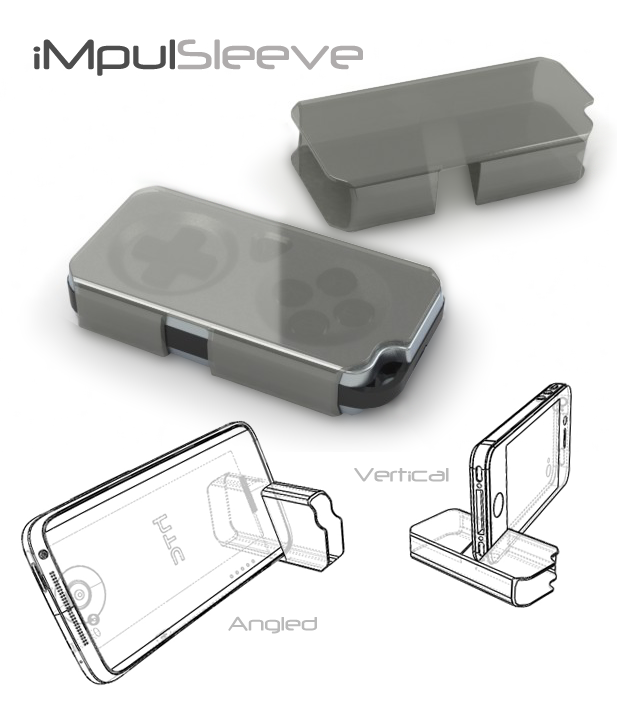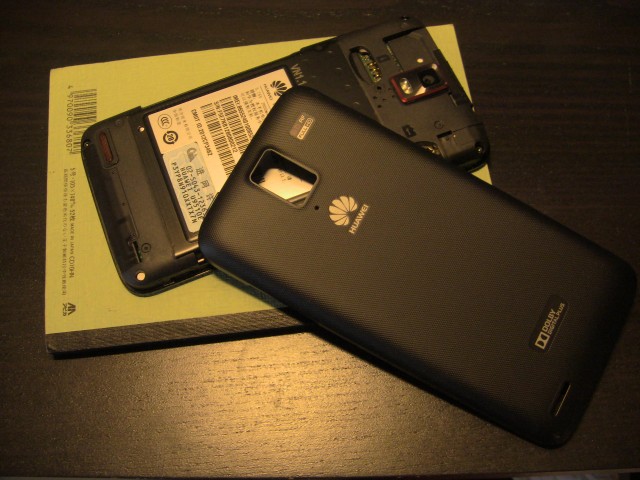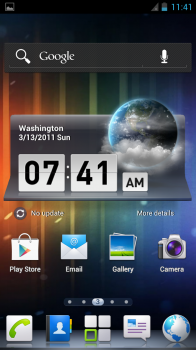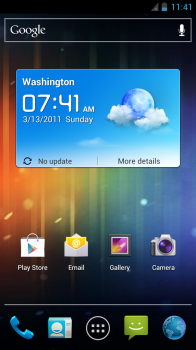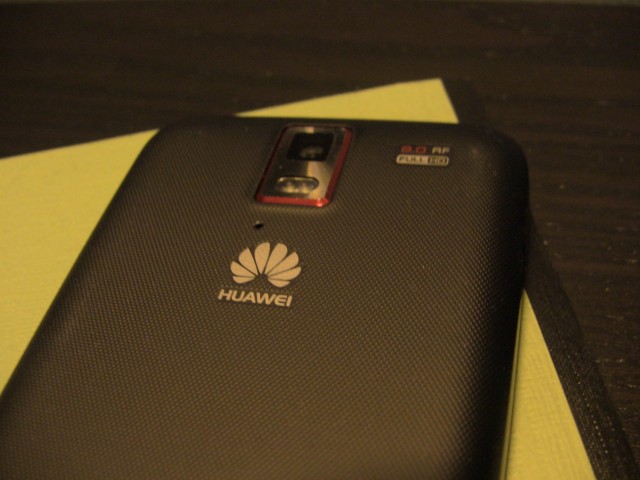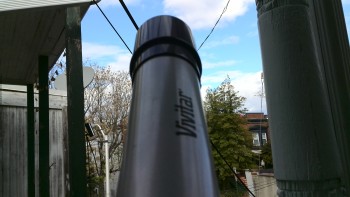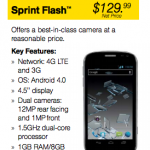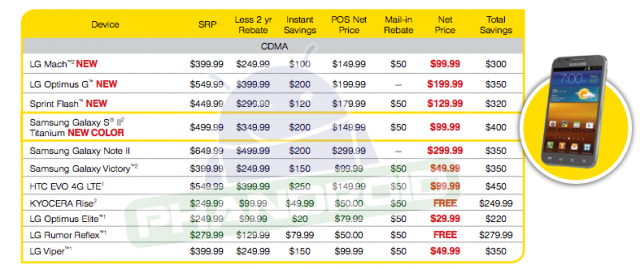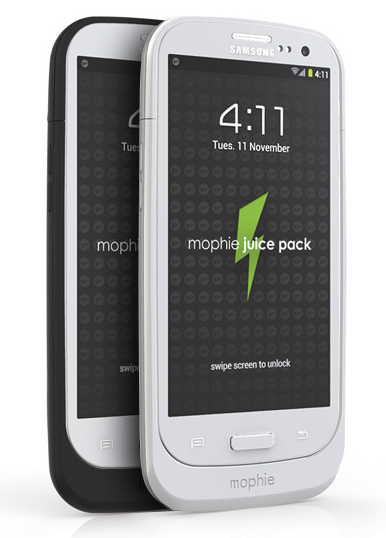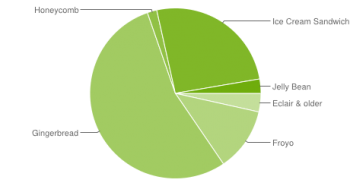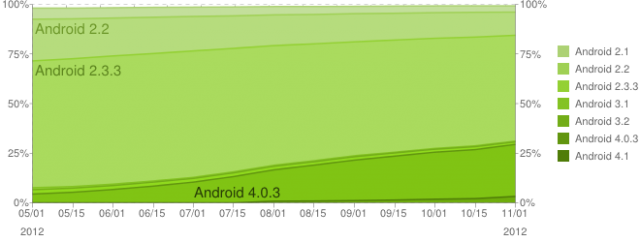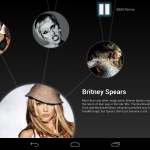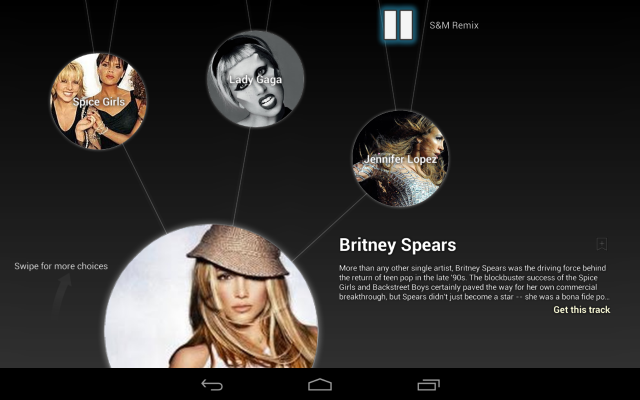Android Authority |
- NEW LTE technology can double smartphone battery life
- Hexxeh ports Chromium OS to Nexus 7 as proof of concept (or maybe his skills)
- HTC Droid DNA press shot leaked
- Facebook Advertisers can now choose which mobile OS and device their ads target
- Samsung Galaxy S3 Mini firmware now available online
- Pre-release Jelly Bean build for Verizon Galaxy S3 leaks, official OTA to come soon
- Android 4.2 Brings Real Time Traffic Updates to Google Maps, conversation mechanism to Google Now
- Oakley Airwave ski goggles bring a heads-up display, GPS and Bluetooth with a $600 price tag
- Today only offer: Samsung Galaxy S3 is $100 at Best Buy on contract
- Sprint’s LG Mach arriving in stores on November 11, priced at $99 on contract
| NEW LTE technology can double smartphone battery life Posted: 03 Nov 2012 12:20 AM PDT
Power is usually the holy grail of mobile communications and mobile computing. No matter how powerful your phone’s processor is, how big the screen, or how fluid the user interface, it will not amount to anything if the power supply is limited. This is why manufacturers and technologists have been trying to find ways to reduce power consumption, or at least find ways to improve efficiency in charging and power use. A startup based in Massachusetts may have the answer, and it tries to improve power management by addressing the problem at its core: power amplifiers. A few takeaways from this article:
Case in point: cell sites around the world will cost about $36 billion to power up this 2012, which amounts to 1% of the world’s energy production. 65% of this is wasted on inefficiencies brought about by a single piece of hardware: the power amplifier. In essence, a cellular tower’s power amplifier should be using significantly less power during standby than when transmitting data. But due to the electrical interference caused by rapid switching between low- and high-power states, power amplifiers are often using higher amounts of power than necessary. On smartphones, processor chips typically use higher levels of power than standby even when just receiving data. This is because the phone has to transmit a signal back to the base station that confirms receipt of packets. Eta Devices, a startup co-founded by two MIT professors, plans to address this deficiency by redesigning the power amplifier itself. The new technology is called asymmetric multilevel outphasing, and will dynamically switch across different voltages, choosing the one that minimizes power consumption. This can be done as many as 20 million times per seconds. The technology is still being tested in the company’s labs. But they are planning to deploy by 2013, first targeting LTE base stations. The team will formally launch its technology at the 2013 Mobile World Congress in Barcelona, which is among the biggest trade shows in mobile tech. But apart from telcos and base stations, the firm envisions a redesign for mobile phone chips themselves. The plan is to produce a single smartphone chip that can handle the different cellular technologies and frequencies used by different standards around the world. To illustrate, the current iPhone has five such chips. Phones can realize significant damage with a reduction of “transistors” in its chips and the number of signal processing chips themselves. By then, we can probably expect to get double the battery life from our devices. That’s unless we increasingly move toward bigger screens and blazingly fast processors. Is anyone optimistic about this new power amplifier design? If we’re hoping for faster and faster processor cores and GPUs without bulky battery packs, then we will definitely need this new tech. Related Posts |
| Hexxeh ports Chromium OS to Nexus 7 as proof of concept (or maybe his skills) Posted: 02 Nov 2012 11:12 PM PDT
What do you get when you cross two connected mobile computing platforms by Google? A Googlestein monster? Not exactly, as popular Liam McLoughlin (better known as Hexxeh) offers in his latest exploit. After porting Chromium OS (which is the open source release of the Chromebook OS) to just about any device, Hexxeh has not ported Chromium OS to Android-based Nexus 7 devices. Why, you may ask? It’s because he can, and because it’s proof of concept that Chromium OS can run on the Nexus 7. Or perhaps it’s more of a proof that Hexxeh can do it, and he has therefore done so. Of course the next question here would be why you would want to have Chromium OS on a tablet computer that already runs Android in the first place. There’s no short answer here, other than perhaps as proof that the Nexus 7 is a capable platform when it comes to cloud computing. There are no details released on this port, only that WiFi and the touchscreen are working. No word on power management and other things that might affect your mobile computing experience. Check out the video below. Someone’s definitely drinking too much Jolt. Related Posts |
| HTC Droid DNA press shot leaked Posted: 02 Nov 2012 11:45 AM PDT
It seems that the arrival of the rumored HTC Droid DNA could be imminent. The 5-inch HTC phablet first graced us with its presence in mid-October when it was announced for the Japanese market as the HTC J Butterfly. In the weeks following, rumors popped up suggesting the J Butterfly would eventually make its way to the United States exclusively for Verizon as the HTC Droid DNA. Now we have a leaked press shot that suggests the Droid DNA will arrive in early December. The press shot comes from well-known tech leaker, Evleaks. Considering information from Evleaks tends to be pretty accurate, odds are this is the real deal. It also helps that Verizon’s own site and internal documents have made mention of the Droid DNA name as well. Wondering what kind of hardware we might see with the HTC Droid DNA? It is believed the smartphone will feature a 5-inch 1080p display, a quad-core Snapdragon S4 Pro processor, 2GB of RAM, 16GB internal storage, an 8MP camera and the power of Android Jelly Bean.
If the HTC Droid DNA is in fact the HTC J Butterfly, is anyone interested in picking this phone up as soon as it arrives? If not, do you still have your heart set on the Samsung Galaxy Note 2 instead? Related Posts |
| Facebook Advertisers can now choose which mobile OS and device their ads target Posted: 02 Nov 2012 10:30 AM PDT
The new feature for Facebook advertisers is that they can now target specific mobile operating systems and specific mobile devices. So if you’re an Android developer and you’re paying for Facebook ads, you can have your ads show up only on Android devices. That way you’re not paying to have them show up on iOS devices or other devices that can’t use your app. For now, the only two mobile operating systems it supports are Android and iOS. So no Blackberry and now Windows Phone options for right now. If you do select Android, you can then select the OEM as well. So if you only want to advertise to Android users with HTC phones, you have that option as well. So Facebook will start showing ads that are actually relevant to me?That seems to be the long and short of it. With ads that target specific people, it is more likely that those people will click on those ads. As an example, if there is a company out there that only makes cases for Samsung phones, they can advertise only to Samsung customers. As Tech Crunch points out, non-mobile companies can get in on this as well. So products that companies may expect Android owners to buy can more closely target Android users. For instance, iOS products can’t use a SD card. So SanDisk probably will probably stop sending their ads to iOS users. As much as advertisement can get in the way, this is actually good news. Over time, mobile users will stop seeing ads that clearly aren’t geared for them. You may even see an ad for an app, a product, or a service that you actually want. It’s a strange world, you never know. By directing ad content to specific users, advertisers can make a better use of their money. Is this a good move by Facebook? Tell us your thoughts. Related Posts |
| Samsung Galaxy S3 Mini firmware now available online Posted: 02 Nov 2012 10:20 AM PDT
Most of us probably aren’t waiting at the edge of our seats for the arrival of the relatively low spec’d Samsung Galaxy S3 Mini. That being said, if you are a developer you might be interested to know that the firmware for the S3 Mini is now available for download. As expected, the firmware indicates the presence of Android 4.1.1 Jelly Bean. Is the Samsung Galaxy S3 Mini really that bad? Yes and no. The biggest disappointment is that the phone has the S3 branding and yet is nowhere near as capable as the larger-screened Samsung Galaxy S3. The bottom-line is that if you simply want a low-to-midrange smartphone that has attractive styling and reasonable hardware, the S3 Mini could be alright as long as the contract pricing isn’t very high. For those that need a refresher on the hardware specs, the Galaxy S3 Mini has a 4-inch display with a 800 x 400 resolution and a dual-core 1GHz NovaThor processor. Other specs include 8 or 16GB of storage, microSD, a VGA front cam, 1500 mAh battery, NFC and a 5MP front cam. What do you think of the Samsung Galaxy S3 Mini? Interested or not? Related Posts |
| Pre-release Jelly Bean build for Verizon Galaxy S3 leaks, official OTA to come soon Posted: 02 Nov 2012 09:19 AM PDT
Despite the gloomy picture some rumors painted for Galaxy S3 users in the US a few weeks back, Samsung's flagship has started receiving official Jelly Bean "butter". Sprint has been the first carrier to roll out the new software package, while Verizon seems to now be next in line. Though Big Red is still hush-hush on the matter, a pre-release Android 4.1 build has been leaked on XDA Developers forum and looks legit. However, according to jucytec, the lucky XDA user who got his hands on the firmware, this is not the latest or the final build, being dated about a month back. Also according to the leaker, there was another build finalized in the meantime, which could reach OTA (over-the-air) in around three weeks if there won’t be any major glitches. That would put the official upgrade sometime at the end of November, which is definitely good news, despite that we all initially hoped it would come sooner. Getting back to the Jelly Bean port on hand, we should tell you that its build number is I535VRBLI5, and, while it should work fine, we don't recommend installing for anything other than custom ROMing. That's because you could void your warranty, brick your device or fail to receive the official upgrade, and all those seem like unnecessary risks to take right now. If you still insist on flashing, you'll need your S3 to be rooted, your bootloader unlocked and some basic knowledge of how these things work. Have fun and let us know how it all goes down! Related Posts |
| Android 4.2 Brings Real Time Traffic Updates to Google Maps, conversation mechanism to Google Now Posted: 02 Nov 2012 09:00 AM PDT
Android Police had an APK tear down party. It included checking out the newest Google Maps and Google Now to see what new features they may have. Google Maps got quite possibly the more functional update out of the two. It gained the ability to bring real traffic updates. Many out there may be asking what the big deal is. After all, Google Maps already had that, right? Wrong, Google Maps updated the traffic information when you began your navigation but brings no new info while actually navigating. Now, if you hit the navigate button and a wreck happens in your path, Google Maps will update mid journey to let you know. Google Now, on the other hand, gets a little humanization. Android Police found code that indicates that Google Now will start to confirm certain actions with you. In some cases, it’s hard to trigger the event, since asking it to call your mother doesn’t really need interpretation. However, this could lead the way to a more interactive experience with Google Now, which could make it a much more direct Siri competitor. Why aren’t these listed as official new features of Android 4.2?Well, when you market something, you really want to put your best foot forward. While the new updates are definitely awesome, they are just feature updates to a pre-existing feature. Google Maps already updates traffic info when you hit the navigation button. Now it does it all the time. Nothing really new, it’s just more vigilant. Also, as Android Police noted, getting the new conversation text out of Google Now can be a pain. Nevertheless, the fact that there are still new features coming out of Android 4.2 is great. Official release of these devices is only 11 days away, do you think anymore new features will be unmasked? Let us know. Related Posts |
| Oakley Airwave ski goggles bring a heads-up display, GPS and Bluetooth with a $600 price tag Posted: 02 Nov 2012 08:52 AM PDT
I have to confess that I am not much of a snow person, but seeing these Oakley Airwave goggles and I almost wish that I was. Or maybe in an effort to avoid bringing this happy Floridian to the snow, is to hope that Oakley finds a way to bring this same technology into glasses for other sports. My wishing aside though, the good news is that the Oakley Airwave ski/snowboard goggles are now available for sale. We should warn you though, these babies do not come cheap. The Oakley Airwave goggles are $599.95. Of course, given the technology, the price is probably justified. As to what they offer — just to begin with, the Airwave goggles have a heads-up display, GPS and Bluetooth. Additional sensors in the goggles will offer details on your altitude, speed and vertical descent. The Airwave goggles can also be paired with your Android smartphone and display your incoming calls and text messages as well as any music playlists. And on top of viewing playlist information, you can also access and control those playlists. Oakley notes that the heads-up display is like looking at a 14-inch display from a distance of five feet.
And for those who are worried about being distracted by the heads-up display, here is how Oakley addresses that concern.
Otherwise, aside from the cool tech inside, the Oakley Airwave goggles have Oakley Plutonite lens material which filters out 100 percent of all UV light and a chassis that is made of lightweight Oakley O Matter which is said to stay “comfortably flexible.” Bottom line here, while this price is certainly not going to make these good for everyone, they do sound really cool. Related Posts |
| Today only offer: Samsung Galaxy S3 is $100 at Best Buy on contract Posted: 02 Nov 2012 08:41 AM PDT
Best Buy had so much success with its 50% off promotion for the Samsung Galaxy S3 last week that it decided to repeat the special offer one last time. The S3 is therefore again up for grabs for $99.99 with a two-year contract from AT&T, Verizon or T-Mobile. We're of course talking about the version of the super phone with 16 GB of on-board storage, but it's still one heck of a deal for one heck of a handheld. Sprint's Galaxy S3 is left out this time around, but we remember that the carrier was in the center of attention last week, so we can probably let this one slide. Especially that now you have your choice of three networks and four different colors, including the special edition "garnet red" on AT&T and the "sapphire black" on Verizon. You can take advantage of the deal both online and in Best Buy Mobile stores nationwide, but do hurry up, because this is a limited-time offer set to end later today. Or you can wait it out and see if the retailer will have something even cooler to offer come Black Friday. What will it be, folks? Related Posts |
| Sprint’s LG Mach arriving in stores on November 11, priced at $99 on contract Posted: 02 Nov 2012 08:22 AM PDT
When it comes to buying a QWERTY smartphone on Sprint, the choices aren't that many. Some of your options include the Motorola Photon Q 4G LTE and the Kyocera Rise. The latest addition to Sprint's QWERTY lineup is the LG Mach. If your fingers have been itching for the LG Mach since we last reported about the phone last month, you'll be ecstatic to hear that Sprint has finally shared some more details of the Mach's release date and pricing. You can get the LG Mach from Sprint stores starting November 11. The slider phone will be offered for $99 with a two-year service agreement. This applies to both new customers and those who are looking to upgrade. The LG Mach has been touted as "one of the thinnest devices" to sport a physical QWERTY keyboard currently offered by the carrier. Looking at the specs, we think there's more to like about the Mach. For instance, the phone boasts a snappy 1.2GHz Snapdragon S4 Plus MSM8960 dual-core processor. As for the rest of the specs, they include a 4-inch display with 800 x 480 resolution, 1GB RAM, 8GB internal storage, microSD support (up to 32GB), 5MP main camera, VGA front-facing camera, 1,700mAh battery, and Android 4.0 Ice Cream Sandwich. There’s no word yet whether it’s upgradable to Jelly Bean. Is the LG Mach your dream slider phone? Related Posts |
| You are subscribed to email updates from Android Authority To stop receiving these emails, you may unsubscribe now. | Email delivery powered by Google |
| Google Inc., 20 West Kinzie, Chicago IL USA 60610 | |





 Advertisements have really grown up in recent years. You still find them everywhere but the primary marketing strategy is no longer tossing a giant picture on a billboard and hope someone drives passed and gets interested. Now, advertisements are internet based. They show up on Google, Facebook, and other various websites to entice people to check out the product. Facebook has taken it a step further.
Advertisements have really grown up in recent years. You still find them everywhere but the primary marketing strategy is no longer tossing a giant picture on a billboard and hope someone drives passed and gets interested. Now, advertisements are internet based. They show up on Google, Facebook, and other various websites to entice people to check out the product. Facebook has taken it a step further.

 With the release of the latest series of Nexus devices
With the release of the latest series of Nexus devices 





